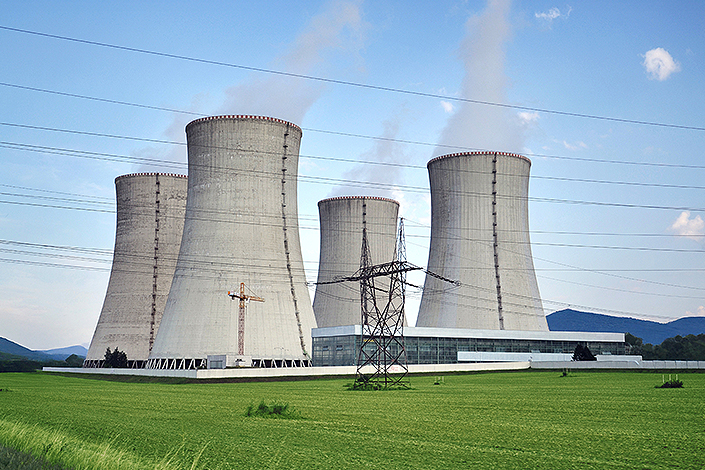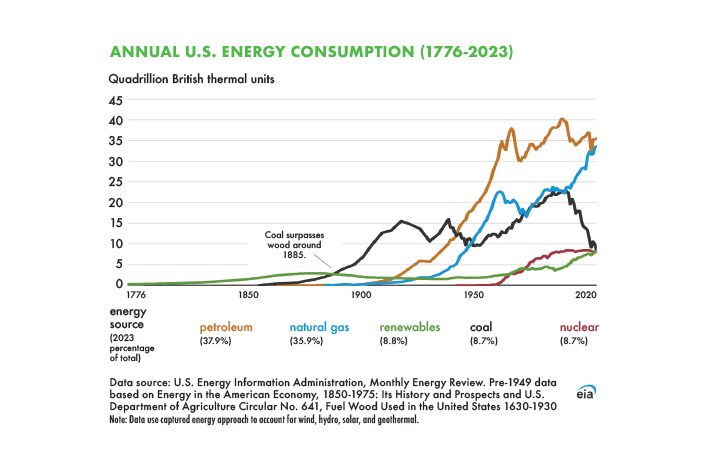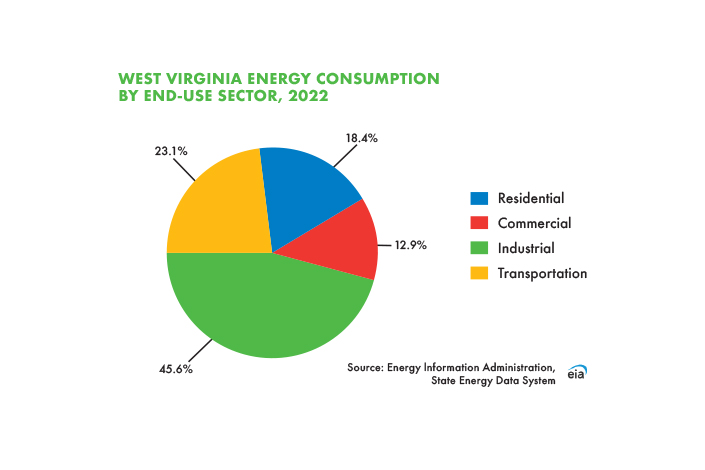By Kenzie Dye

West Virginia’s energy consumption has evolved significantly over the past 40 years. Across residential, commercial and industrial sectors, usage has increased, reflecting the state’s reliance on traditional energy sources while also recognizing emerging challenges and opportunities.
The state’s change in energy consumption is comparable with national trends.
“In the residential sector, electricity use has nearly doubled since 1973 due to increased air conditioning and the use of consumer electronic devices,” says Eriks Brolis, director of economic development and strategic initiatives for The Nature Conservancy (TNC). “The commercial sector’s rise in energy consumption is driven by the expansion of buildings and electronic devices, yet advancements in energy-efficient technologies have helped mitigate this increase to some extent. The industrial sector’s increase in energy use is largely due to higher production in energy-intensive industries.”
Nicholas Preservati, deputy secretary for the West Virginia Department of Commerce, provides insight into the factors shaping the state’s energy landscape.
“West Virginia is one of the nation’s largest energy producers, and the generation that is most dominant, coal and gas, is an energy-intensive industry,” he says. “West Virginia is also home to a lot of mining and manufacturing companies that tend to consume more energy.”
According to the Energy Information Administration (EIA), total energy consumption per capita in West Virginia increased between 1982 and 2022. Residential energy use rose by 27.6%, commercial consumption by 62.4% and industrial energy by 21.5%. However, the industrial sector experienced a significant drop during the 2008–2009 recession, taking nearly a decade to recover.
“Compared to national trends, West Virginia consumed 64.9% more energy per capita in 2022,” Preservati says. “Factors that influence this are lower-than-average population density, aging infrastructure that is less energy-efficient and a greater reliance on self-transportation rather than public transit.”
West Virginia remains a coal-dominant state, with 85.6% of its electricity generated from coal-fired power plants. This has played a crucial role in ensuring grid reliability, particularly during extreme weather events.
“There are two types of energy generation, intermittent and baseload,” Preservati says. “Coal is a baseload source, meaning it operates continuously regardless of conditions. That’s critical during peak demand periods, like heat waves or winter storms.”
Despite the state’s relatively low electricity prices—ranking 14th cheapest in the nation in 2023—West Virginians face challenges due to rising energy demand and aging infrastructure.
“According to the EIA, since 2008, West Virginia’s net electricity generation has decreased by about 2% each year, while national demand plateaued in 2005,” Preservati says. “U.S. net generation has only increased by 0.10% each year.”
Preservati explains that this trend is predicted to change in the next couple of years with the construction of numerous data centers as a result of rapid artificial intelligence (AI) development.
“Many of these data centers are being constructed in PJM Interconnection, West Virginia’s regional transmission organization, which may strain utilities and drive prices up,” he says.
While coal remains a dominant energy source, renewable resources are making slow but steady progress in the Mountain State. Wind energy now contributes 3.69% of the state’s electricity, while hydroelectric power accounts for almost 2%. Solar energy is developing at a slower pace, with only two utility-scale solar sites operating as of late 2024.
Brolis says policy and regulatory changes, such as incentives for clean energy and carbon pricing, will further drive the adoption of energy-efficient practices and reduce emissions.
“The TNC works in collaboration with policy makers, companies and communities to advance clean energy in ways that minimize impacts to nature and maximize benefits to people,” he says.
West Virginia is implementing a few strategies to reduce energy waste that focus on efficiency and conservation. The West Virginia Office of Energy is launching rebate programs for home energy and home electrification as well as appliance upgrades.
The Community Advancement and Development division of the West Virginia Department of Economic Development houses the Weatherization Assistance Program, a federally funded program that helps increase the energy efficiency of dwellings owned or occupied by low-income individuals, aiming to reduce residential energy expenditures and improve health and safety.
Appalachian Power’s Take Charge initiative offers rebates and discounts to customers on recent energy-efficient purchases of Energy Star-certified appliances that help reduce at-home energy use.
“Encouraging consumers to invest in these energy-efficient appliances can reduce energy consumption by up to 90%, leading to substantial savings on utility bills,” Brolis says.
Over the next 20 years, Preservati says West Virginia’s energy consumption is set to dramatically increase due to the expansion of data centers, electric vehicles, long-term battery storages and energy-intensive industries like hydrogen and chemical production.
Brolis echoes Preservati’s sentiment that energy consumption is set to drastically change.
“The rise in these electrified technologies will substantially increase electricity demand, necessitating expanded clean energy generation and grid capacity,” he says. “Integrating more renewable energy sources will make managing supply and demand more complex, but it offers the opportunity to transition aging electricity infrastructure to be smart and ready to meet the needs of the new energy economy.”











